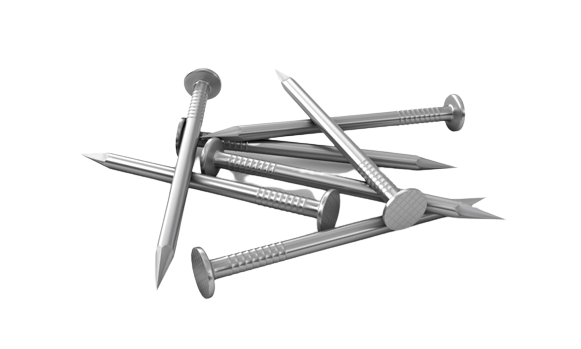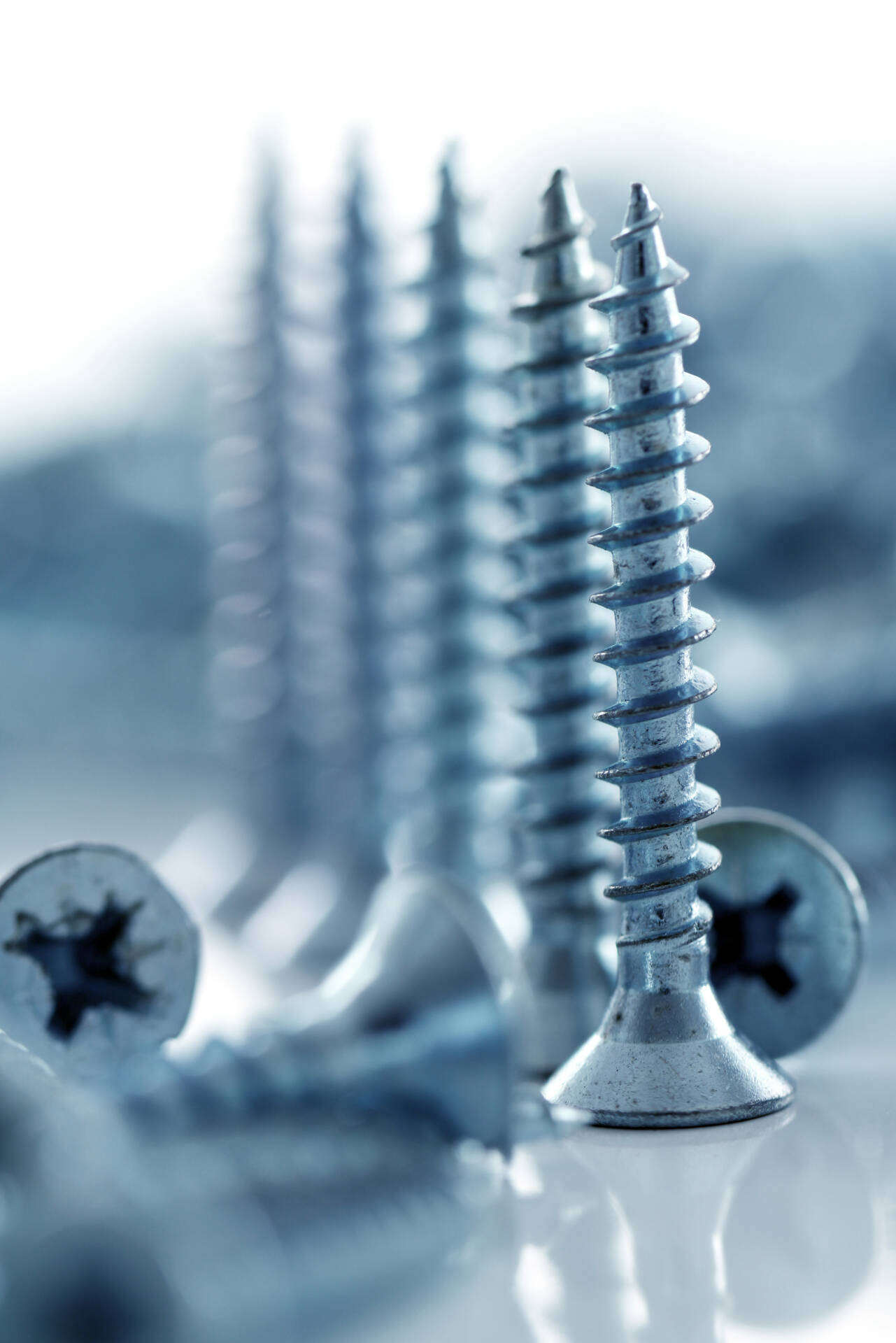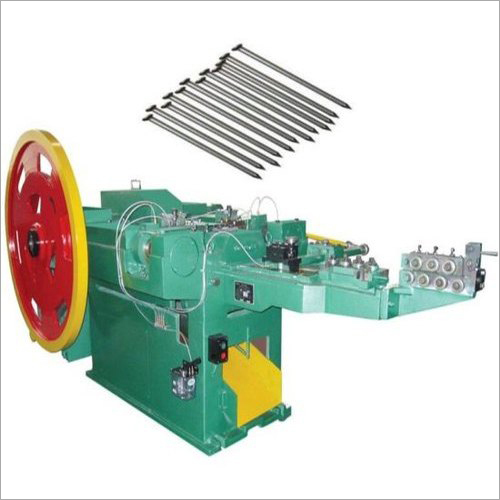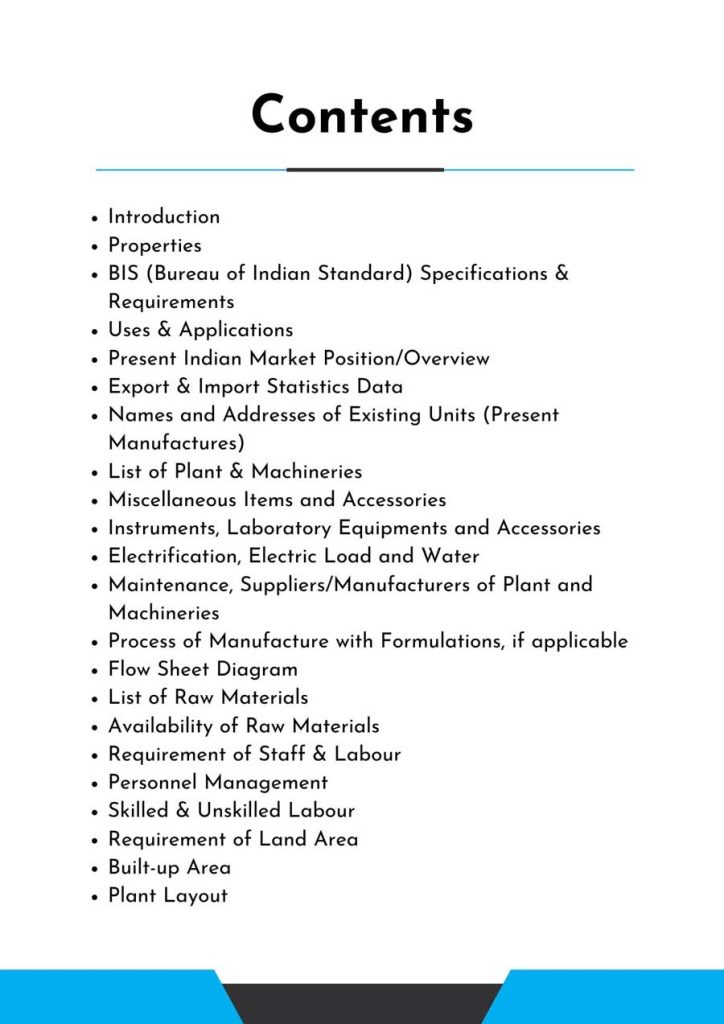Feasibility Report On
Nail Manufacturing
Nail Manufacturing is the process of creating nails, essential fasteners used in construction and various industries. It involves shaping metal wires, cutting them into desired lengths, and adding pointed ends. Nails are vital components in building structures, making them an integral part of the construction industry.

Introduction
Feasibility Report For Nail Manufacturing.
The industrial process of creating nails, which are small metal fasteners used to bind materials together, is known as nail manufacture. For ages, nails have been an essential component of construction, woodworking, and a variety of other industries. From raw material selection through final packaging, the nail production process consists of various processes.
Material selection is the initial step in nail manufacture. Steel wire, stainless steel, and, on occasion, brass or aluminum are common materials. The chosen material must be strong and durable enough to withstand the stresses produced during use.
The wire is run through a series of dies to attain the desired diameter after the material is chosen. This is known as wire drawing, and it is critical in determining the proper nail size. When the wire has reached the proper thickness, it is chopped into lengths suitable for nail manufacture.
The cut wire is then put into a nail-making machine, where it is shaped into nails via a number of mechanical procedures. The wire is sliced into individual nail blanks by the machine, which then produces the head and point of each nail. The machine may contain extra stages, such as threading, grooving, or knurling, depending on the type of nail needed.

The nails are annealed once they have been manufactured. This procedure increases the strength and toughness of the nails by reducing internal stresses inside the metal framework. Following annealing, the nails are completely cleansed and polished to improve their appearance. Following this, the nails are surface coated or finished.
Galvanizing, where a layer of zinc is added to guard against rust, and coating with other corrosion-resistant compounds are common finishing alternatives. After the finishing process, the nails are separated and tested for quality control. Defective nails are removed, guaranteeing that only top-quality items reach the market. The sorted nails are then packaged in different numbers for distribution and sale.
Automation and technical improvements have considerably improved nail manufacturing efficiency and consistency in recent years. Modern machines are capable of producing a large number of nails in a short period of time while retaining great precision and quality.
Feasibility Report Sample On Nail Manufacturing



Market Strategy of Nail Manufacturing
The market potential of iron nail manufacturing is immense and can prove to be a lucrative business opportunity. Iron nails are widely used in the construction industry for various purposes such as attaching materials, fastening objects, and securing structures. With the rapid expansion of the construction sector globally, the demand for iron nails is expected to rise significantly. As urbanization continues to increase and infrastructure projects multiply, the need for high-quality iron nails will continue to grow.
Additionally, the rise in home renovation and DIY projects further contributes to the demand for iron nails. As the construction industry is one of the largest contributors to the global economy, the potential for growth in the iron nail manufacturing market is tremendous. Moreover, iron nails are also used in other industries such as furniture manufacturing, automotive, and packaging. This diversification of the market further enhances the prospects for iron nail manufacturers.

Additionally, investing in state-of-the-art machinery and employing advanced manufacturing techniques can help increase productivity and reduce production costs, making the business more profitable.
With proper marketing and distribution strategies, targeting both the domestic and international markets, iron nail manufacturing can prove to be a highly profitable venture with a promising future. However, it is important for manufacturers to stay updated with the latest industry trends, comply with quality standards, and constantly innovate to stay ahead in the competitive market.
Overall, the market potential for iron nail manufacturing is immense, and entrepreneurs with a vision for growth and innovation can capitalize on this opportunity and establish themselves as leaders in the industry.



